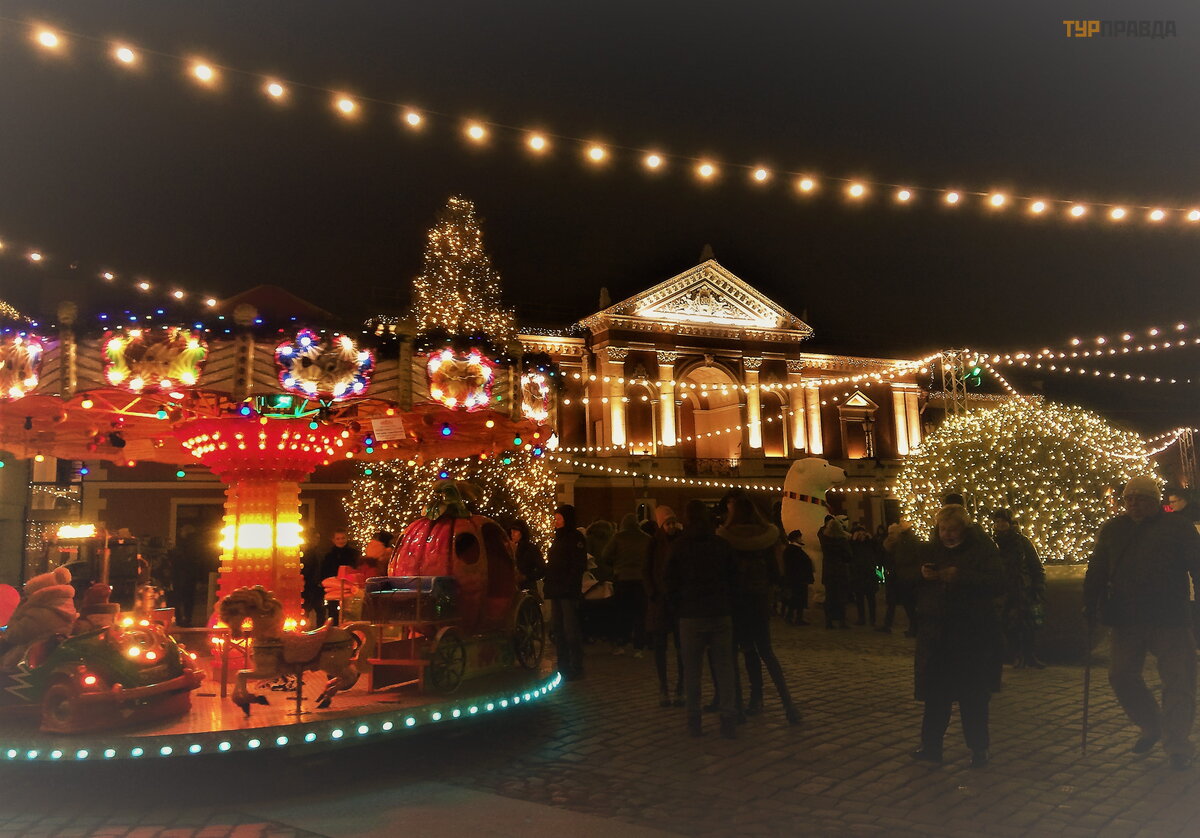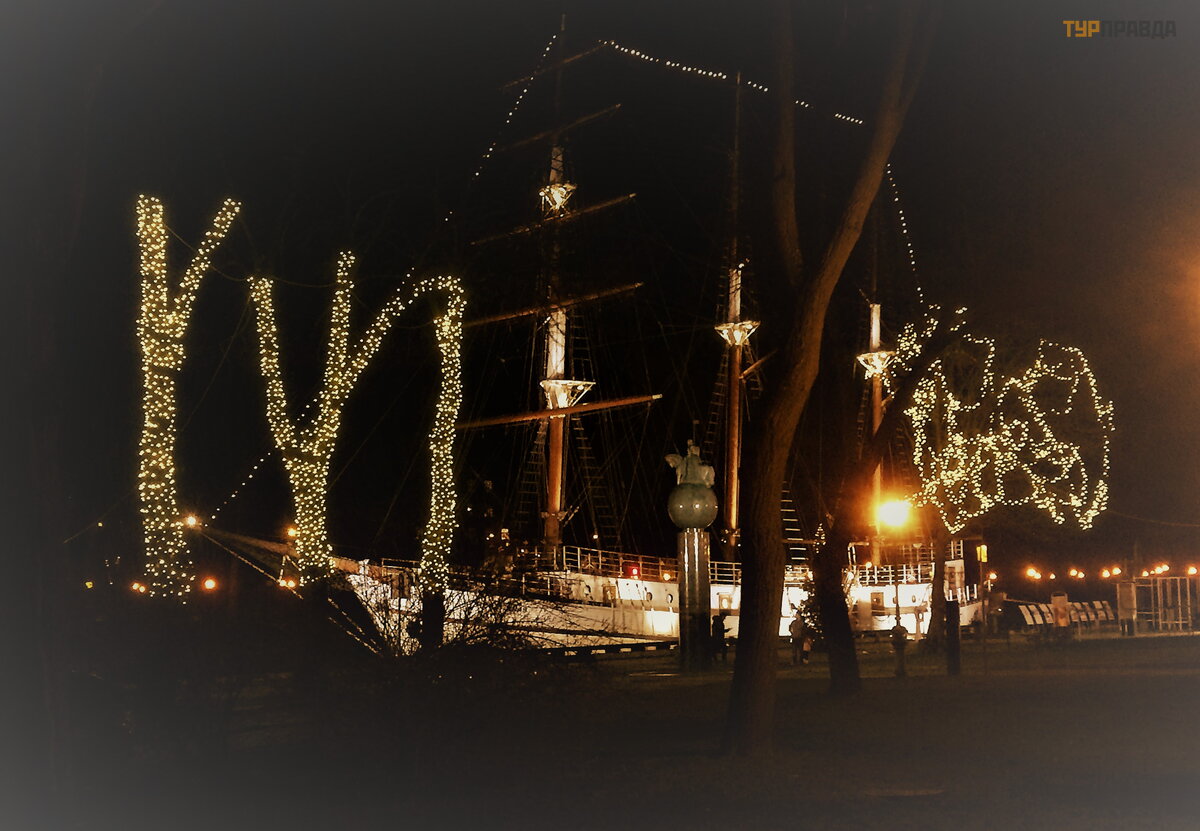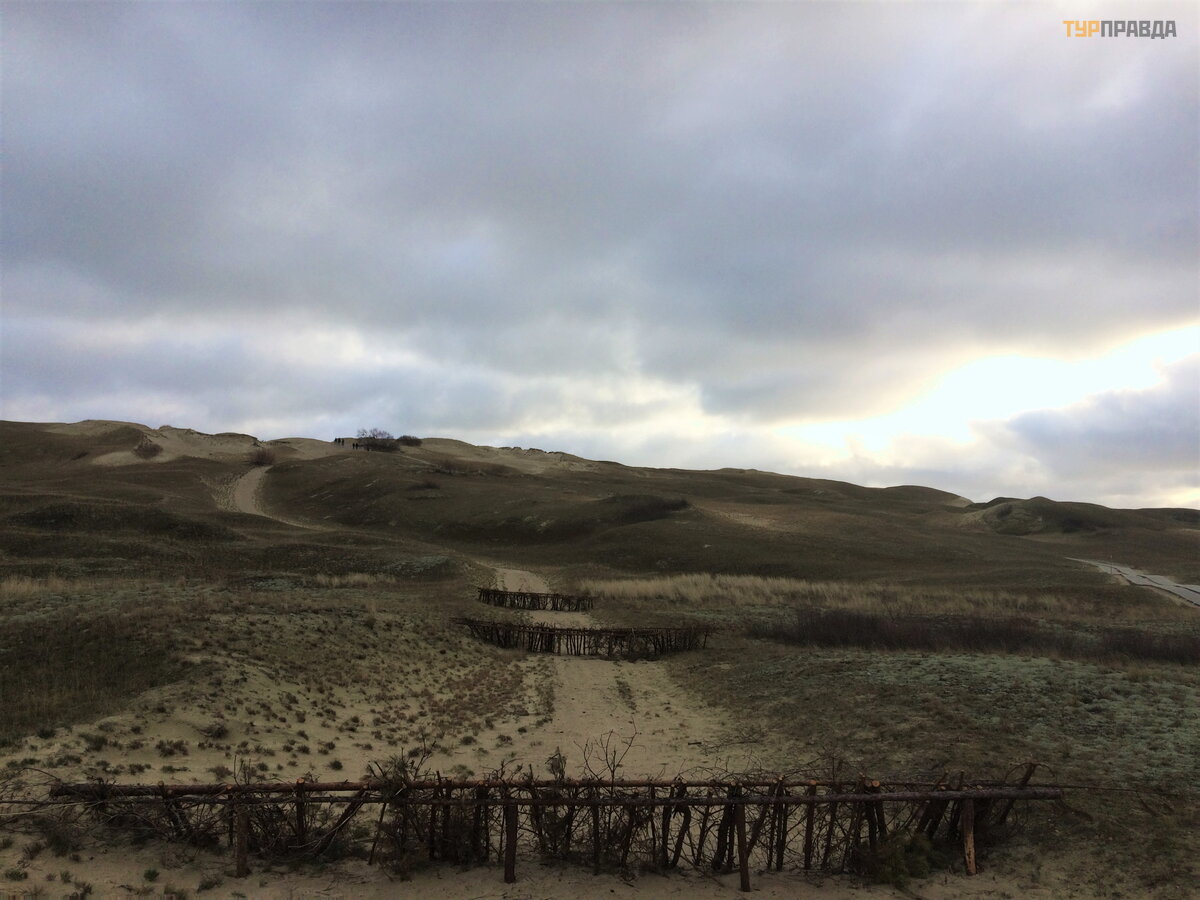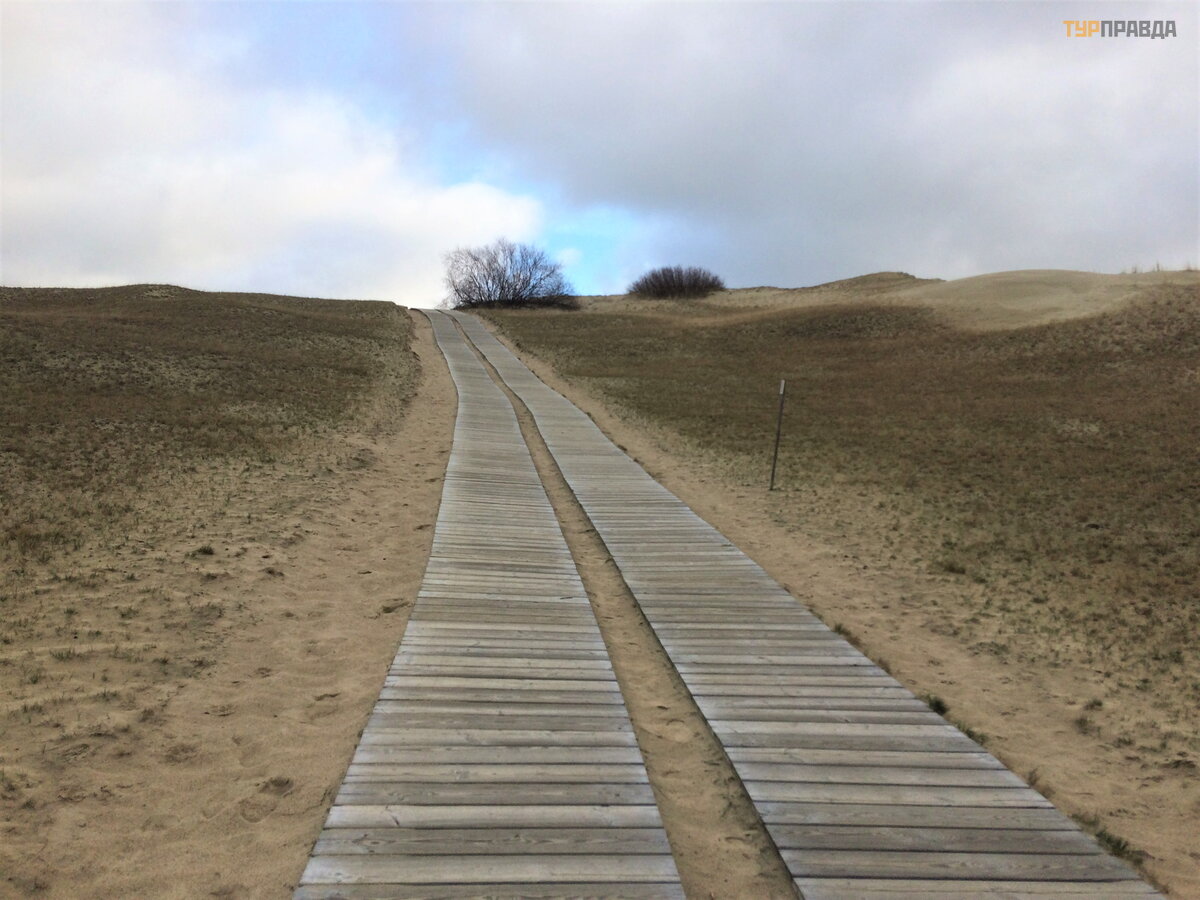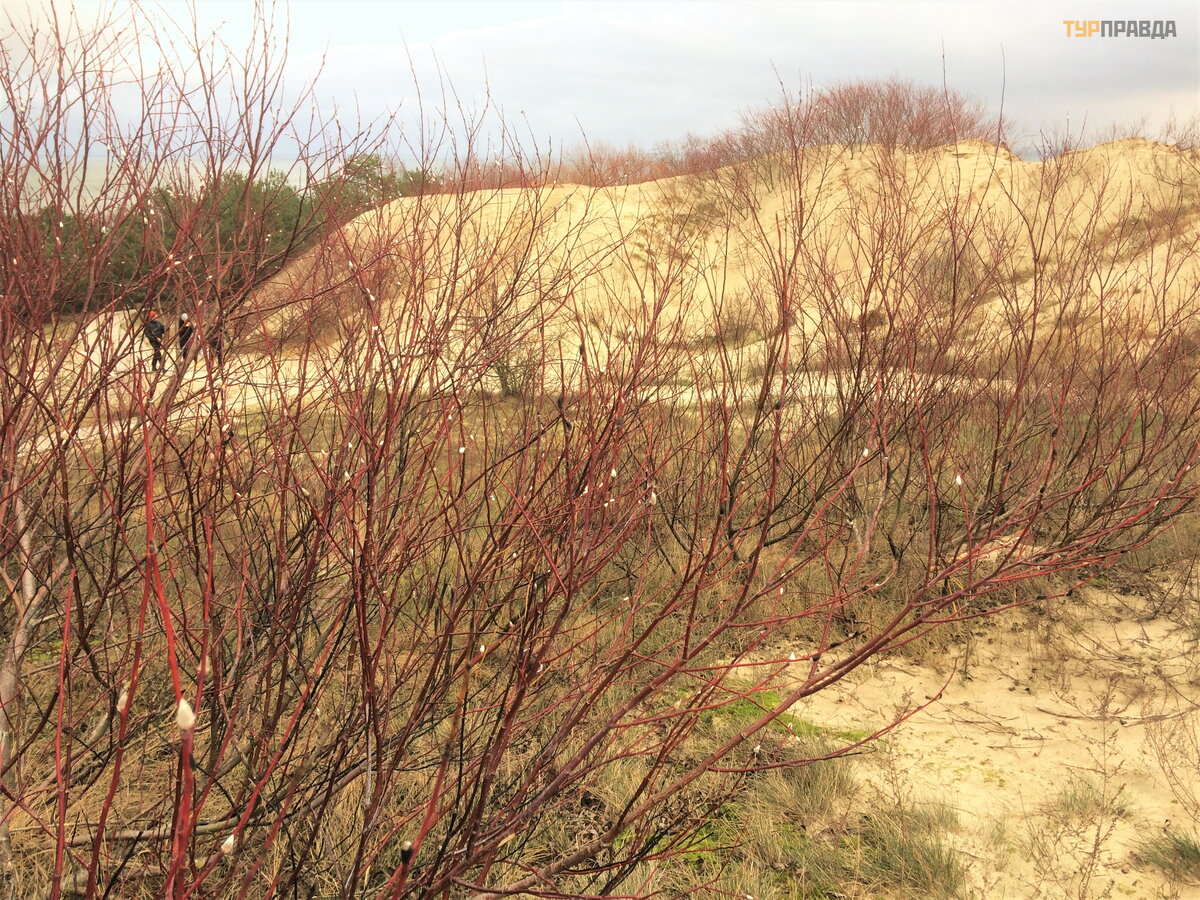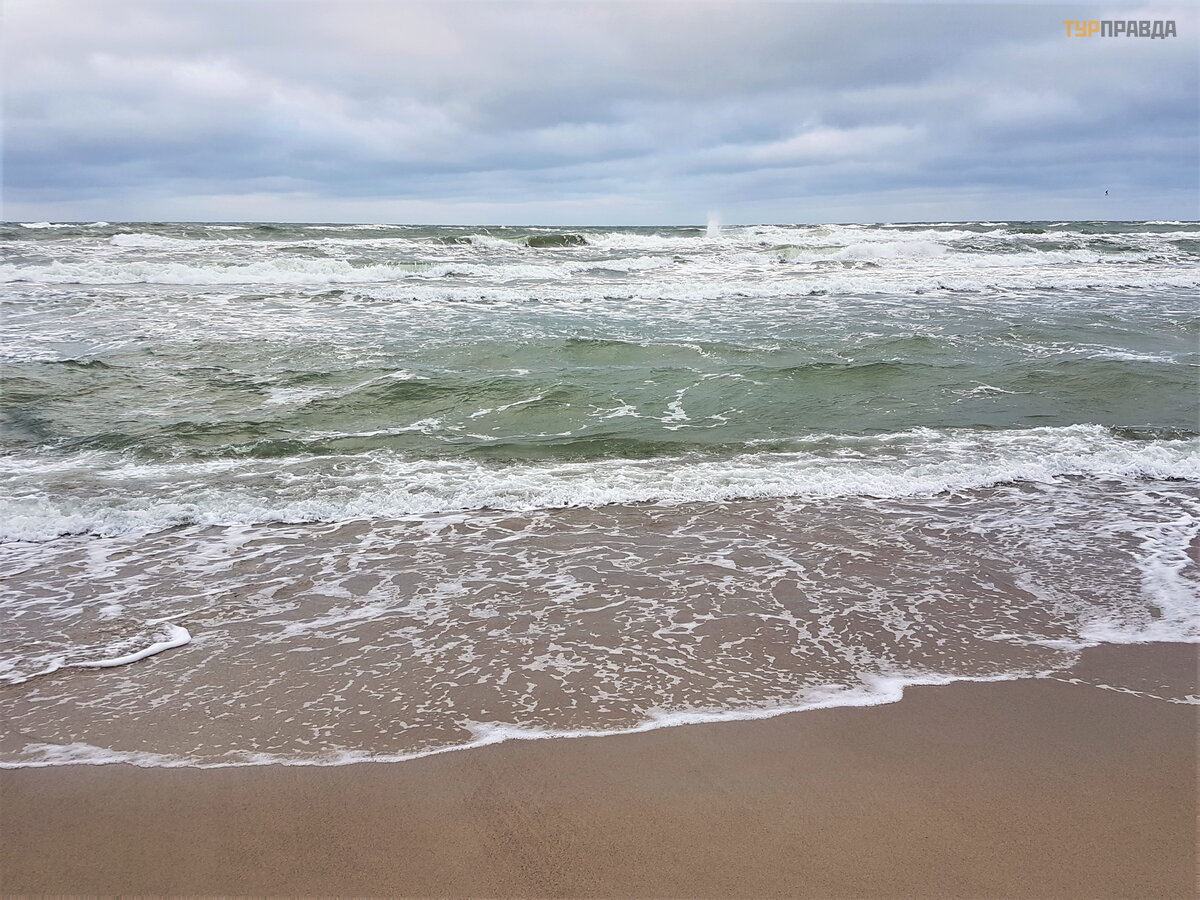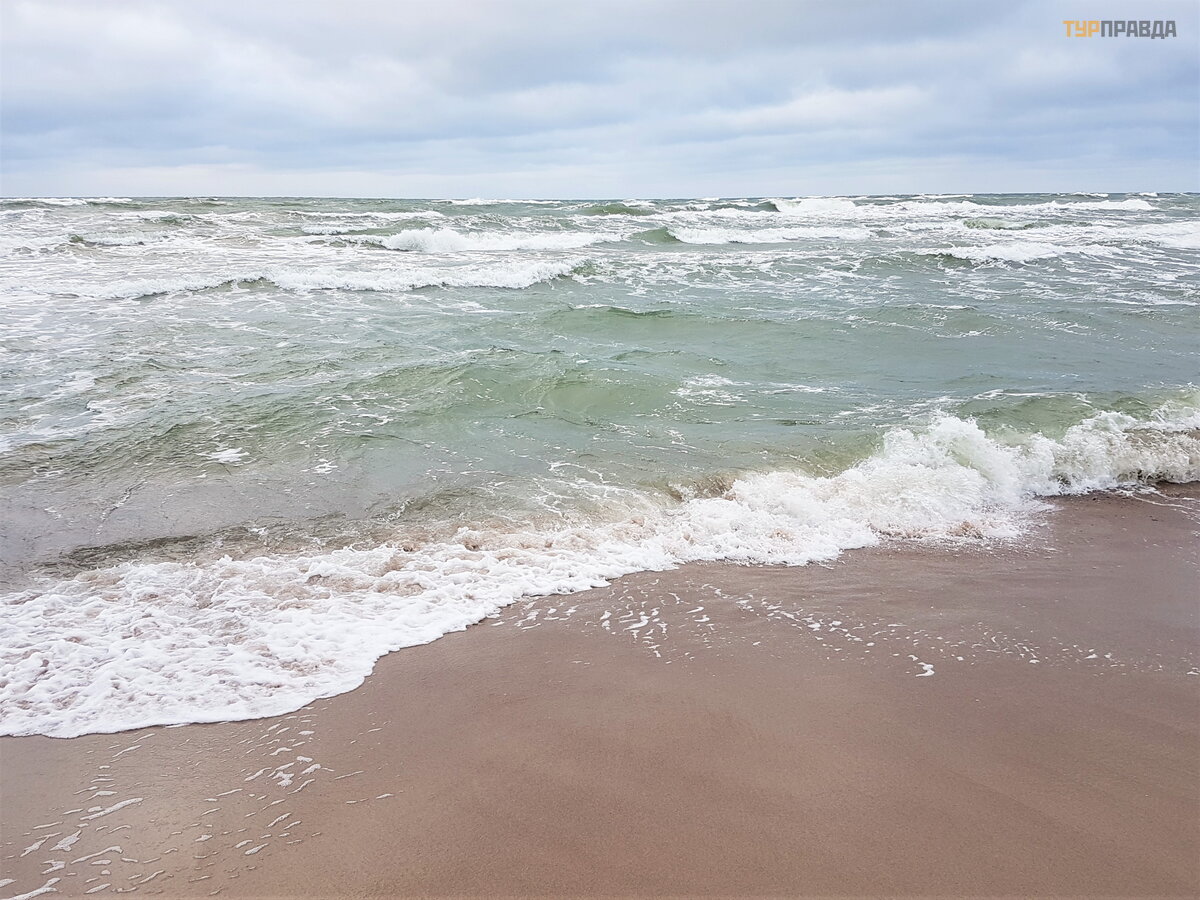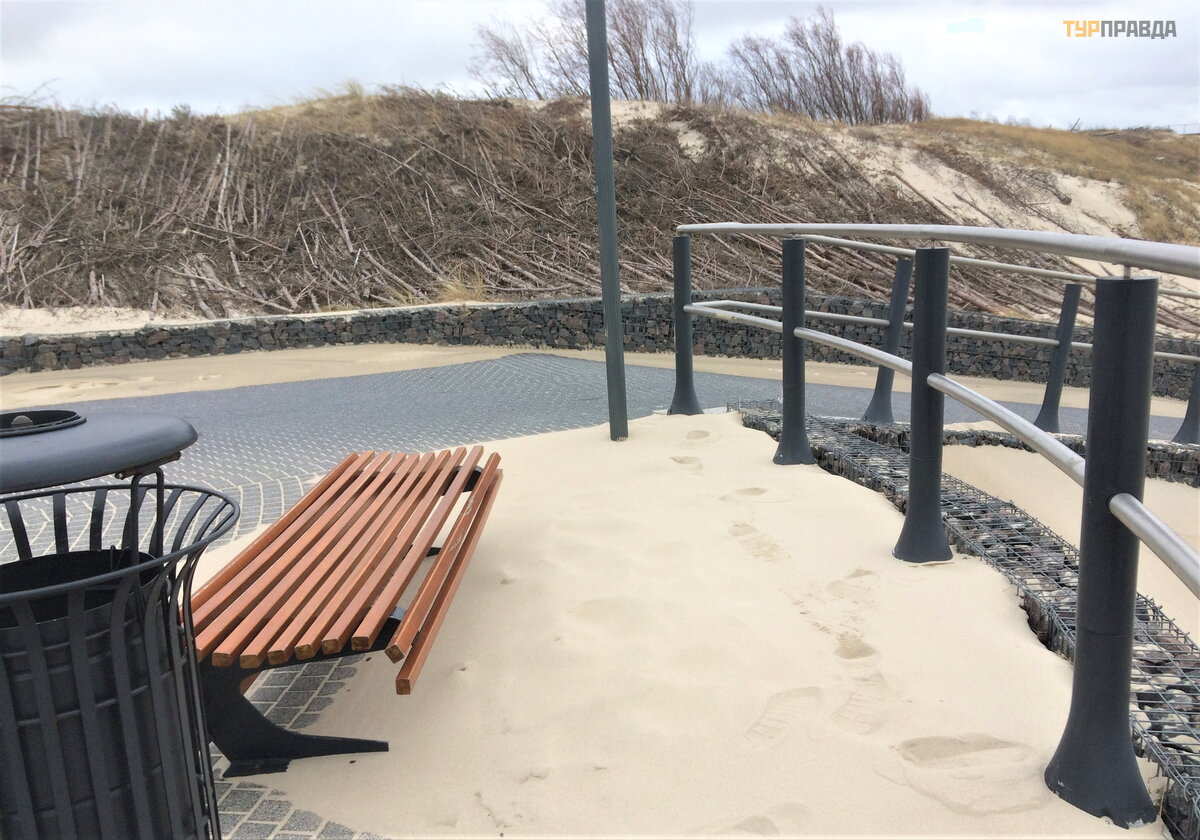Sea, sun and sand... Winter sketches of the Curonian Spit
Sea, sun and sand are, in general, no longer exotic surroundings when celebrating the New Year for some residents of non-marine lands. In any case, such statements are not particularly surprising in modern society. “So why don’t we give up on the sea” - I once thought...
“Well, mother, you have completely lost my mind. Curonian Spit in winter?! ” - said my husband, interrupting my presentation of the planned road trip route from Moscow to Lithuania through Belarus and back during the New Year holidays. And I haven’t told you yet that it would be possible to go further along the coast of the Baltic Sea through Palanga and straight to Latvia, for example... And then Riga... Then you can go home to Moscow... Well, okay, okay, maybe I’m really too roamed in my dreams, but Curonian Spit I won’t give up!
We carefully looked at each other... Without uttering a word, each expressed everything he thought about this. My view turned out to be more convincing : )).
I can't say that visiting the Curonian Spit is really my great dream. But somehow the thought was spinning in my head that, on occasion, I should look. I have been looking for this case in every possible way and pushed the main sponsor and implementer of my ideas to it for several years, they say, we need to somehow make a road trip around the Baltics. And I finished it : ))
… It was assumed that although we would go to the sea, but to the winter one. In fantasies, supported by photos from the network, snow-covered landscapes and frozen seashores loomed.
But winter this year decided to play a little joke and brought no snow. Vilnius pleased us with warm but cloudy weather. Read more about Vilnius in the story "Vilnius New Year's Day and Evening Outfits"
But the farther we drove away from Vilnius and the closer we got to the sea, to Klaipeda, even a little smell of the sun.
Yeah, here it is - winter, in full swing, +6 °C overboard : )). It's December 31 in the yard - it's time for snowdrops!
In Klaipeda we stayed at the Ibis Styles Klaipeda Aurora 3* hotel, which is located next to the ferry crossing to the Curonian Spit. Read more about the hotel in a review.
We didn't really get to see Klaipeda itself. Initially, we did not plan to visit it at all. And it became a mistake. The city certainly deserves tourist attention. No matter how we cut the time later, we still arrived later than expected, so we didn’t have time to see the city in daylight.
Of course, I had an itinerary for the main attractions. And even a map has been prepared with the designation of funny and curious and simply pretty city sculptures, of which there are a great many in the city. Not all of them are marked on this map, there are already 37 of them in my memo!
But in the dark and in a hungry state, everything is seen a little differently. Look, the mermaid, it seems, has already seen off the old year : ))
Since it so happened that the solemn moment of entering the new year 2020 coincided with a stay in Klaipeda, a table was booked to drink this event in a restaurant of national cuisine of a rather popular chain Etno Dvaras. But we did not make it to the appointed time, and the restaurant was open that day, according to the website, only until 19.00, and we canceled the reservation in the hope that we would find somewhere to eat. But after six in the evening, we still did not find a single open eating establishment, only coffee shops and a hot dog tent on Renaissance Square. And the same Etno Dvaras already at half past seven refused to accept hungry travelers. Well, okay, it didn’t succeed solemnly, it turned out sincerely. Having bought local sausages and cheeses in the supermarket, we already walked to the hotel, where we had a quiet family drinking in the company of our president from the TV.
Klaipeda seemed to us that evening quite calm, quiet and slightly slowed down. It seems that only a few tourists, who somehow got here, wandered in small flocks through the evening streets in search of food under the guidance of off-line maps in their smartphones. We saw one couple and another small company, awkwardly trampling at the closed doors of cafes and restaurants. Yes, yes, it turns out that we were not the only ones who wanted to eat, we walked along the same paths : )). But there are still people in the city! Oh, how fireworks and fireworks blared on a festive night! Looking out of the windows of the hotel, it seemed that we were surrounded by hostilities. The sky was blazing and thundering! Noise was also in Klaipeda, explosions were also on the other side of the Curonian Lagoon.
And the next day we were swallowed up by the Curonian Spit. And they returned to the city in the dark. So Klaipeda remained unexplored and unexplored. Maybe we'll meet again. . .
The first day of 2020 turned out to be clear and sunny. Photos from the hotel room:
A little practical information: you can get to the Curonian Spit by car only through the so-called New Ferry. The old one, functioning since 1870, is used by pedestrians and cyclists. Ferries run every 20-40 minutes from early morning until late evening. The cost of transporting a car with all its contents (luggage, passengers) today is 12.3 euros. The site seems to indicate that for each passenger 1 euro, and the driver is included in the total cost. But in fact, no one counts the passengers. At the box office they told us what kind of horseless crossings. Read more on the ferry site, there is a Russian version.
Port landscapes. Very cute too:
Entry to the territory of the National Park "Curonian Spit" is paid, today it is 5 euros per car. In the summer season (June 20 – August 20) it is many times higher. In 2019 it was 20 euros. According to the girl at the checkpoint, it will be 30 in the summer of 2020. There are all kinds of complex ticket options. More up-to-date information on the website of the Lithuanian side.
Ideally, you should spend at least a few days on the Curonian Spit. The closer you get to know her, the more she reveals her interesting and little secrets. I confess that before visiting this reserve, or rather, before preparing for the visit, all our knowledge about the Curonian Spit came down to “unique landscapes”, dunes. Well, there is also the “dancing” forest in the Russian half, resort and recreational affairs, endless beaches... Something like that. But everything, it turns out, is not so simple. The Curonian Spit is not just a unique place, but a joint creation of nature and human hands. All this mixture of various landscapes (from forests to deserts) on a small patch of land is the result of a struggle between man and the natural elements, which arose, again, through the fault of man.
We will not delve into geology and history, since now it is easy to find information (here, for a start, for example, here). In short, all these lands were once covered with forests. In XVI-XVII there was a peak of shipbuilding in Memel (modern Klaipeda) forests were mercilessly cut down. The thin layer of soil that covered the sands was trampled down by cattle. And huge masses of sand, no longer restrained by anything, began to move under the influence of the strongest winds. They covered everything in their path. People left their homes. But the sand overtook their new settlements again and again. Entire villages remained under the layers of sand. By the second half of the 17th century, almost the entire Curonian Spit had turned into a lifeless desert.
The authorities paid attention to this problem only when the sands began to threaten navigation along the Memel Strait, and this is the income of the city. The first work on landscaping and strengthening the dunes began at the beginning of the 19th century. And now we are witnessing that fragile balance achieved over the past 200 years of hard and painstaking work and struggle between man and nature.
 Tame dunes are visible behind the trees
Tame dunes are visible behind the trees
 Walking in the dunes is allowed only on specially organized trails
Walking in the dunes is allowed only on specially organized trails
We were first met by the Juodkrante settlement on the coast of the Curonian Lagoon. Not a soul. On the embankment in some places there are traces of yesterday's fireworks. Silence, calmness, peace.
And it seems that the whole little Curonian world is like that. I even managed to get a little upset, that's not what I came here for. Yes, it's cute, but not for that. . . And what about contrasts? And the riot of the elements?
An employee at the checkpoint kindly provided us with a tourist map of the Curonian Spit (in a photo album) and recommended, if we are not afraid to walk for a long time, it may be difficult, to look at the Nagliai dune, or rather, a natural reserve, number 8 on the map. Yes! We definitely need to go there!
You can see the Baltic Sea from the top:
At some point, the deck ends, but the path continues. The trail is marked with pegs:
This place is also called Dead Dunes. Somewhere out there, under many meters of sand, there were fishing villages. Once upon a time there was life. . .
No matter how sad it is, but the sight is impressive, bewitching.
In addition, a piercing wind was blowing from the Baltic, which added additional tragedy or something. When we went up, it even helped, the wind pushed in the back. And on the way back - yes, yes, “The wind in the mug, and I spit” (A. Shaganov, I. Krutoy). Oh, imbued, oh, sanded, full of teeth and pockets : )).
There are many different dunes on the Curonian Spit, and they all have their own history. The most popular is probably the Parnigio Dune, popularly known as the Lithuanian Sahara.
 Contemplative bench on Parnigio dune
Contemplative bench on Parnigio dune
It is located near the Nida village, not far from the border with Russia. It is easily accessible for motorists, you can drive almost to the very top. Yes, and several kilometers of hiking trails are organized along it, there is a trail from Nida itself to the top. A sundial was installed on the summit in 1995. But this is not only a clock, but also a calendar. It’s still somehow clear about the time of day, but about the day of the year - this is already difficult for the average mind : )).
This watch already has its own history. In 1999, a hurricane broke the stele. For some time, the authorities were slow to restore, or even did not want to, they say, as a warning about the destructive power of the elements. Like it or not, it is not known for certain, but at the moment the watch has been restored.
The photo below shows paragliding dune, where the first fans of this sport were based in the 30s of the last century.
And behind it is Russia, the Kaliningrad region. Native side.
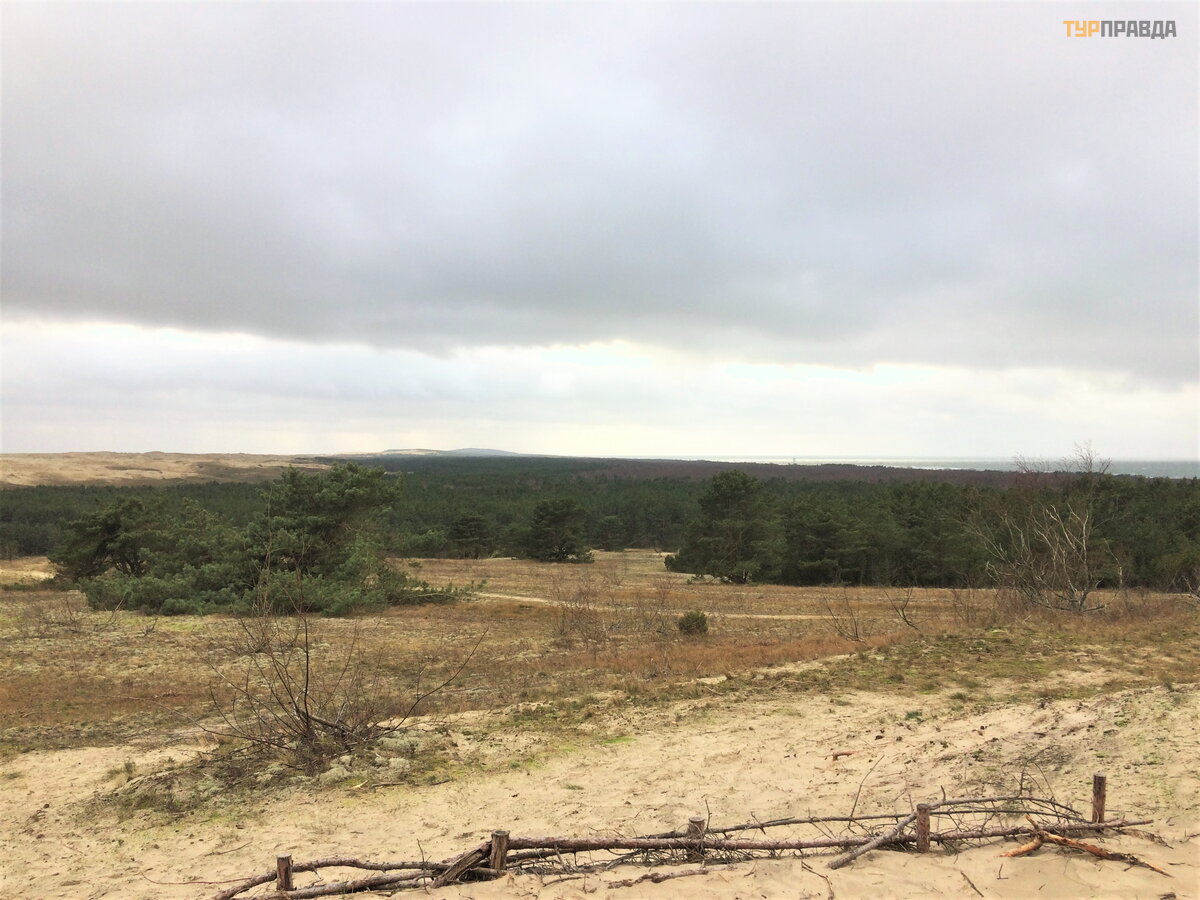 To the right - Baltic Sea, straight - Russia. In good weather, the border post tower is clearly visible
To the right - Baltic Sea, straight - Russia. In good weather, the border post tower is clearly visible
The valley between the Dunes of Parnigio and the Paragliders is Death Valley. At first I thought that such a terrible name was due to the next villages buried in sand. No. There is another sad page in the history of this resort place. In 1870–72 During the Franco-Prussian War, a French POW camp was set up there. They worked on the landscaping of the dunes, and the living conditions were clearly not resort-like. Most of the prisoners died from starvation and disease, and they were buried in the same place. . . In recent years, the Lithuanian and French authorities often communicate on this topic.
But life goes on. Life wins! And now the bush was about to bloom among the sands, and even in the midst of winter - January 1 : ))
The sun was, the sand was felt, now the sea is absolutely necessary! Let's move on to water procedures.
I love the sea. Any. Calm and violent, warm and not very warm, gentle summer and formidable winter.
When we were driving along the spit, we heard a constant rumble. What is it? Maybe it's a stunning wind so confused in the crowns of pines, seeps between the trunks? And only approaching the beach, it became clear that the Baltic was making such a noise. The photo, of course, cannot convey all the strength and power of the winter sea, the incredible beauty of the gray-green waves. During a storm, you can't relax, of course. But personally, such a riot of nature brings me to puppy delight.
Sand instead of snow. . .
It involuntarily pops up in my memory ". . . And swept by the wind, winter sweeps, sweeps... " (lyrics by L. Kozlova, music by S. Berezin).
Oh, how wonderful it must be to walk along these endless beaches in calm weather, even if not in summer. In a storm, after all, it’s noisy)
By the way, the ramparts along the entire beach line of the Baltic coast of the spit are artificially created dunes, foredunes are the first line of the sand protection complex. They can also be crossed only on special flooring.
This is the end of our short acquaintance with the Curonian Spit. Let it be fleeting, but o-very impressive. We did not see much, but charming sketches are created in memory. And, I think, they will not disappear, no, no, and they will emerge from the storehouses of consciousness. You see, some kind of global work (journey) on the topic of the Curonian Spit will be created.
They say how you celebrate the New Year is how you spend it. Yes, it's a tempting start. Let's see, let's see what this year will please us with. . .
P. S. Thanks to my faithful friend and companion for realizing in time that he also needs to come here, to the Curonian Spit! And even in winter : ))






